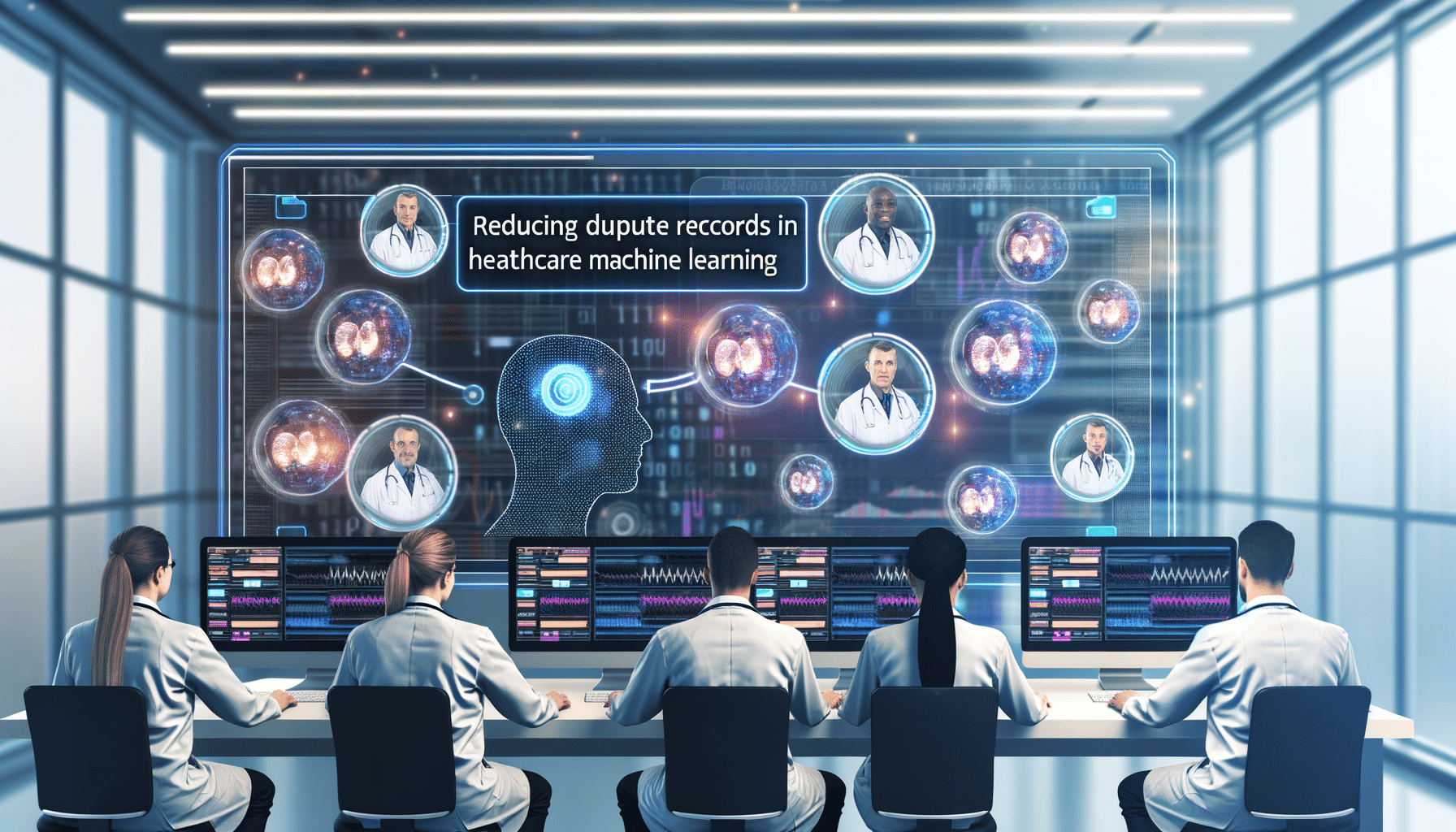- Data Accuracy
- December 23, 2023
Reducing Duplicate Records in Healthcare with Machine Learning

Transforming Healthcare Records: A Machine Learning Approach to Eliminate Duplicates
In the digital age, healthcare records hold an immense wealth of data, delivering critical insights into patient care and operational efficiencies. However, one prevalent issue that continues to challenge the healthcare sector is the duplication of records. Duplicate records can lead to inefficiencies, financial losses, and most critically, impact patient safety. This is where machine learning, an advanced facet of artificial intelligence, demonstrates unprecedented potential.
Imagine walking into a world-famous library searching for a rare book. Everywhere you look, the library holds multiple copies of the same books, muddling the search process and rendering the catalog system ineffective. Duplicate healthcare records create a similar chaotic scenario, obstructing streamlined care and decision-making.
Understanding the Problem of Duplicate Records
Duplicate healthcare records occur for numerous reasons, ranging from patient information being inaccurately or inconsistently recorded across various departments to multiple entries for the same patient due to visiting different facilities. These discrepancies are not just clerical nuisances; they pose significant challenges including:
- Increased administrative workload and associated costs
- Complicated patient histories leading to potential medical errors
- Threats to data integrity and security
- Compliance issues with regulatory requirements
Why Machine Learning is the Game Changer
Traditional methods of deduplication, often reliant on manual verification, are not only time-consuming but also prone to human error. Enter machine learning—a game-changing technology empowering healthcare systems to handle the vast data volumes and complex patterns that duplicate records pose.
Machine learning algorithms can be trained to analyze enormous datasets, identifying patterns and anomalies in real-time. Through continuous learning and adaptive models, these algorithms enhance the identification process, significantly reducing the rate of false positives and negatives.
How Does It Work?
When machine learning is applied, the system uses sophisticated statistical methods and clustering techniques to compare and contrast specific attributes across records, such as:
- Name variations (e.g., John Doe, J. Doe, Jon D.)
- Address standardization and variances
- Date of birth discrepancies
- Medical history and treatment codes
Utilizing a mix of supervised and unsupervised learning approaches, these models “learn” to identify and merge duplicate entries efficiently. Supervised learning leverages annotated datasets to train models on known duplicates, while unsupervised learning explores unlabeled datasets, grouping similar entries to discover duplicates autonomously.
Implementing Machine Learning in Healthcare Systems
The journey to implementing machine learning solutions in healthcare for deduplicating records involves strategic steps:
- Data Collection & Preparation: Collate comprehensive patient data from various sources, ensuring accuracy and completeness.
- Algorithm Selection: Choose machine learning models that align with the specific healthcare data structure and deduplication objectives.
- Training Models: Prepare labeled datasets to train models using supervised techniques, refining with unsupervised methods for enhanced accuracy.
- Integration & Testing: Integrate the solution into existing IT infrastructure, conducting extensive testing to assess effectiveness and reliability.
- Continuous Monitoring: Establish monitoring systems to ensure continuous improvement and adaptability of the models to new data and patterns.
Benefits Beyond Deduplication
The value of implementing machine learning in managing duplicate healthcare records stretches beyond data accuracy:
- Enhanced Patient Safety: Accurate, singular patient records lead to safer and more effective care delivery.
- Operational Efficiency: Reduced administrative burden and streamlined operations improve overall healthcare facility efficiency.
- Cost Savings: Minimized duplication diminishes unnecessary expenses and maximizes resource allocation.
- Regulatory Compliance: Better data management aligns with industry regulations such as HIPAA, ensuring compliance and avoidance of penalties.
Conclusion
As the founder of RecordsKeeper.AI, I am passionate about harnessing cutting-edge technology to improve the precision and efficiency of record management. Machine learning holds transformative potential in the healthcare sector, tackling the challenge of duplicate records and elevating patient care quality. As you consider the intricacies of today’s digital landscape, contemplate the profound impact of moving towards a system where machine learning eradicates these inefficiencies, laying the groundwork for an effective, safe, and accurate healthcare experience.
For those in legal, finance, and compliance roles tasked with record keeping, the implications of this technology are promising. Should you wish to delve deeper into the benefits of machine learning for your organization, I invite you to explore RecordsKeeper.AI. Let us guide you in transforming record management from a burden into a strategic advantage. Follow me for more such insights on the intersection of technology and record management.
Toshendra Sharma is the visionary founder and CEO of RecordsKeeper.AI, spearheading the fusion of AI and blockchain to redefine enterprise record management. With a groundbreaking approach to solving complex business challenges, Toshendra combines deep expertise in blockchain and artificial intelligence with an acute understanding of enterprise compliance and security needs.
Related Posts

Enhance Record Accuracy with RecordsKeeper.AI
Improve document accuracy with AI assistance.
- November 16, 2024

How to Improve Data Accuracy in Financial Reports Using Automation
Explore methods for enhancing data accuracy with automation tools.
- March 4, 2024
Archives
- January 2025
- December 2024
- November 2024
- October 2024
- September 2024
- August 2024
- July 2024
- June 2024
- May 2024
- April 2024
- March 2024
- February 2024
- January 2024
- December 2023
- November 2023
- October 2023
- September 2023
- August 2023
- July 2023
- June 2023
- May 2023
- April 2023
- March 2023
- February 2023
- January 2023
- December 2022
- November 2022
- October 2022
- September 2022
Want to get more content like this?
Signup to directly get this type of content to your inbox!!
Latest Post
Document Control for Equipment Maintenance
- January 20, 2025
Managing Records for Multiple Clients
- January 19, 2025
Handling Conference Documentation
- January 18, 2025
Setting Up Department Record Reviews
- January 17, 2025





